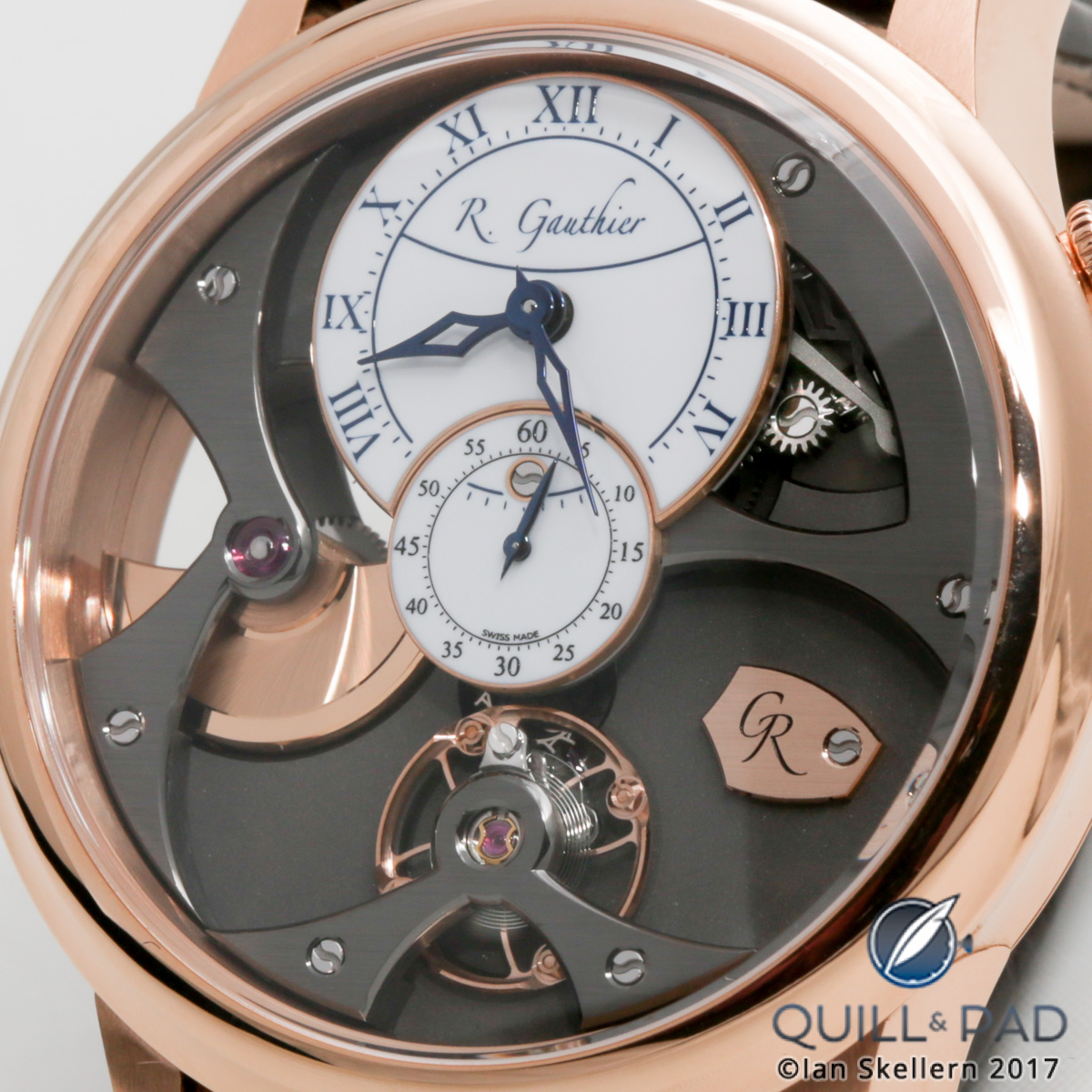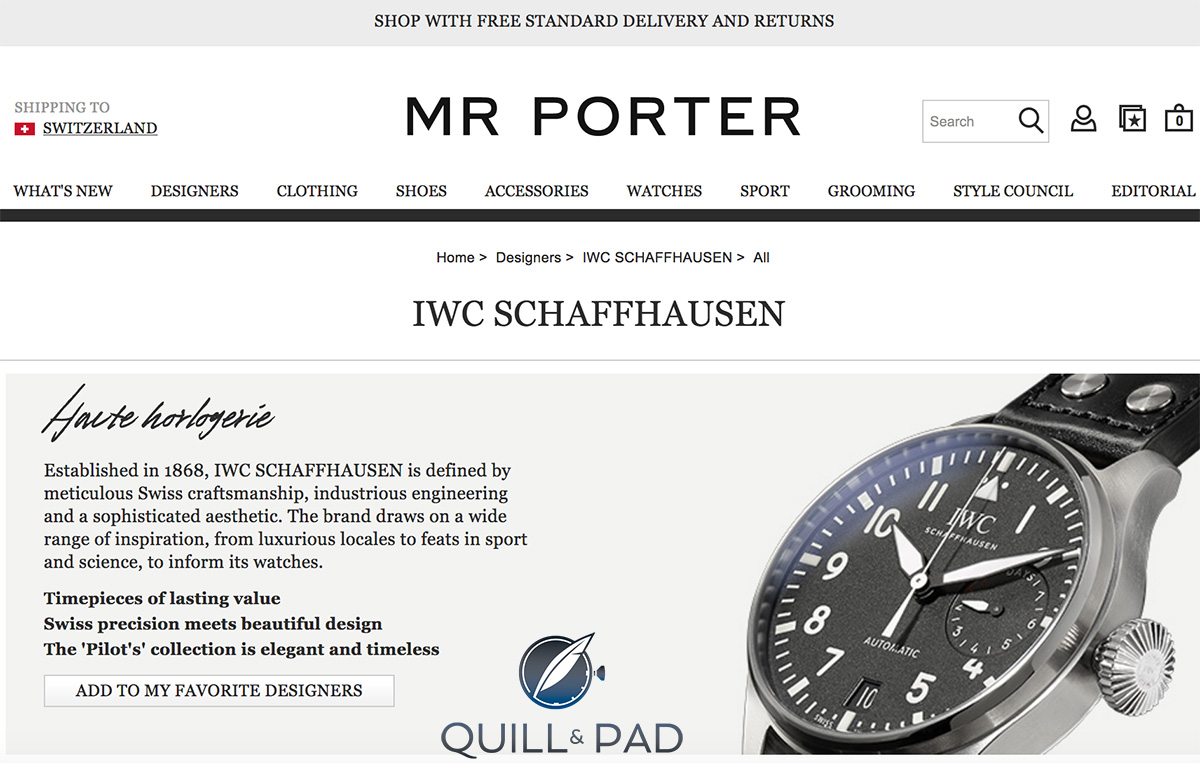
Watch brands, retailers, distributors, and collectors alike have known for at least a decade that the internet will revolutionize watch retailing just as it has already revolutionized books (Amazon), music (Apple iTunes), television and films (Netflix), travel (TripAdvisor), and so much else.
And while collectors have been hoping and praying that the revolution comes sooner rather than later, leading to better value for money (and perhaps a better buying experience in general), brands, retailers, and distributors have basically crossed their collective fingers, squealed ineffectually about the grey market that they created and continue to nourish, and with a few exceptions just hoped for the best.
Look how that turned out for the music industry.
But over the last couple of years, and even over the last few weeks, there have been ripples in the watch retailing universe – a trickle of initiatives that may (or may not) quickly turn into a flood. I am predicting that as soon as a few more major high-end brands embrace internet sales on a user-friendly, multi-brand platform, the flood gates will open.
Here are a few of things that you may have missed but should be aware of:
2015: Richemont signs agreement to merge the Net-A-Porter Group with YOOX Group, at the time the global leader in retail for leading fashion brands. YOOX Net-A-Porter (YNAP) is now a massive global internet retail sales platform for many leading fashion brands and no doubt for many leading watch brands in the not-too-distant future.
2015: Richemont then invites LVMH to join the YOOX Net-A-Porter platform to compete with Amazon. Bloomberg News reported that Richemont group chairman Johann Rupert said at a conference in 2015, “’We’re not big enough, what I said to them was they can come in and get equity in the company if they commit their brands to sell via the platform.”
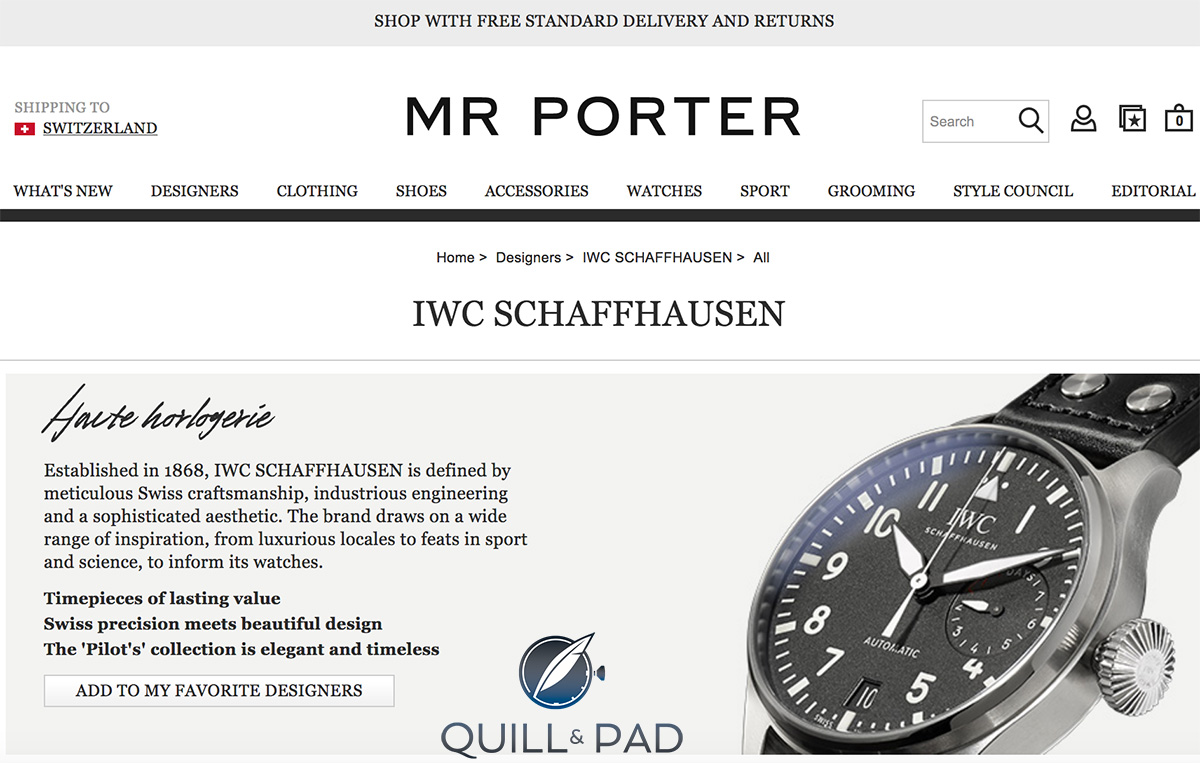
IWC on the Mr Porter internet sales platform
2016: Richemont brand IWC launches sales on Mr Porter, a Net-A-Porter platform (I expect more high-end Richemont brands to follow).
2017: Without fanfare, Chrono24, the world largest internet sales platform for both used and new (grey market) watches, listed a “Brand Boutique” section that is an official online retailer for Benzinger and Moritz Grossmann, two small though high-end brands that by themselves would be cause for comment. But also listed is the higher profile Linde Werdelin, which is a small brand that has been selling watches on its own website for years. Again, interesting but not earth-shattering news.
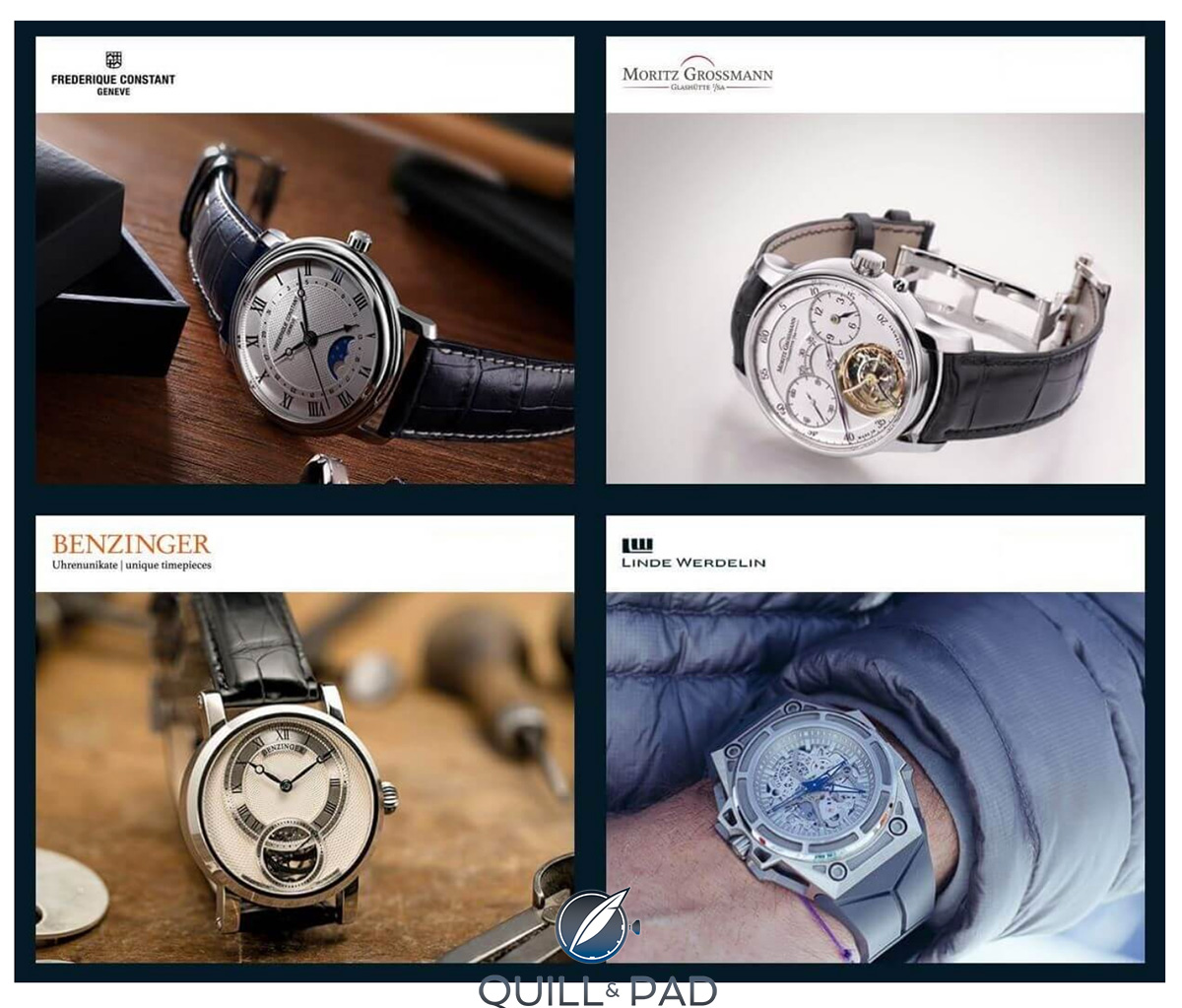
Chrono24 “Boutique Brands” include Benzinger, Moritz Grossmann, Linde Werdelin, and Frédérique Constant (with more sure to follow)
But Frédérique Constant, which was bought by Citizen in 2016, is big news (see Citizen Acquires Swiss Frédérique Constant Group As Port Of ‘Citizen Global Plan 2018’).
Frédérique Constant is a large Swiss manufacture with an estimated 3,000 retailers selling around 200,000 watches per year mainly in the $1,000-$5,000 range. It is a big, serious brand and it’s now officially selling watches via Chrono24.
And I’ll bet those sales bring in a lot of interesting data that many other large brands would love to get their hands on.
Many haute horlogerie brands and upmarket retailers have been telling themselves for decades that clients might buy cheaper watches online, but wanted the luxury personal boutique experience for more expensive models.
And for some clients that’s true, but they are likely to be an ever smaller percentage of the retail client base. You only have to look at how many sales of expensive watches at auction go to online or phone bidders to appreciate that buyers are ever more comfortable with buying with clicks rather than bricks.
That’s the good news regarding watch retail evolution, but there’s this . . .
Many, if not most, watch buyers do not know or realize that they are not the clients of most watch brands: in the vast majority of cases, the collector is a client of the retailer, not the brand.
This becomes obvious when visiting a large watch exhibition like Baselworld or the SIHH (which is now opening to the public) for the first time: collectors are surprised to learn that they have more chance of seeing the latest models by their favorite large brands at their local retailers than at the fair.
Except for the smallest of independents that sell both direct as well as to a few specialist retailers, the clients of the largest brands are distributors controlling the sales rights of countries and even continents and for medium-sized brands the clients are retailers.
This geographical carving up of the globe worked well until around 20 years ago because international air travel was expensive, even for those who could afford to buy expensive watches. Brands could set fixed prices, and collectors had few options for comparing prices and few options as to where to buy and how much to pay.
But as the cost of international flights dropped and more and more people flew internationally for both work and pleasure, those interested in watches soon realized that there were considerable savings to be made from buying in countries outside their own.
And in the last few years, it has become relatively easy to compare prices and buy new watches from any major retailer in any country and have the watch directly shipped door to door.
But while watch collectors now have the option of comparing prices and buying worldwide, large retailers cannot openly compete internationally because of the restrictive geographical contracts they have had to agree to for the right to sell the larger brands.
A brand or distributor will give a retailer the right to sell in a specific region or country, and if the retailer breaks that agreement it risks losing the right to sell that brand. Retailers still sell and ship worldwide, but it’s done quietly.
That’s why you don’t get the big retailers offering their own online sales platforms. The best retailers would like to compete internationally, but can’t. And while there have been a few high-end brands experimenting with selling on their own websites, the revolution is likely to have truly arrived when there is one dominant multi-brand digital sales platform.
The future: some predictions
The runes are not looking good for the watch retailers as they are losing ground on three fronts:
- They no longer “own” their local or regular clients as exclusively as they once did as collectors are ever more comfortable buying from whoever offers the best price and service.
- They cannot openly access and compete in the larger worldwide market that the internet offers because of restrictive geographical sales agreements.
- Large brands and groups like Richemont will soon be selling directly to consumers worldwide thanks to tried-and-true sales platforms like YOOX Net-A-Porter. That will cut out the middleman: the retailers.
On the plus side for retailers, especially high-end retailers, many customers will want and be happy to pay extra for exceptional personal service and experience. And many, if not most, collectors will still want to try before they buy.
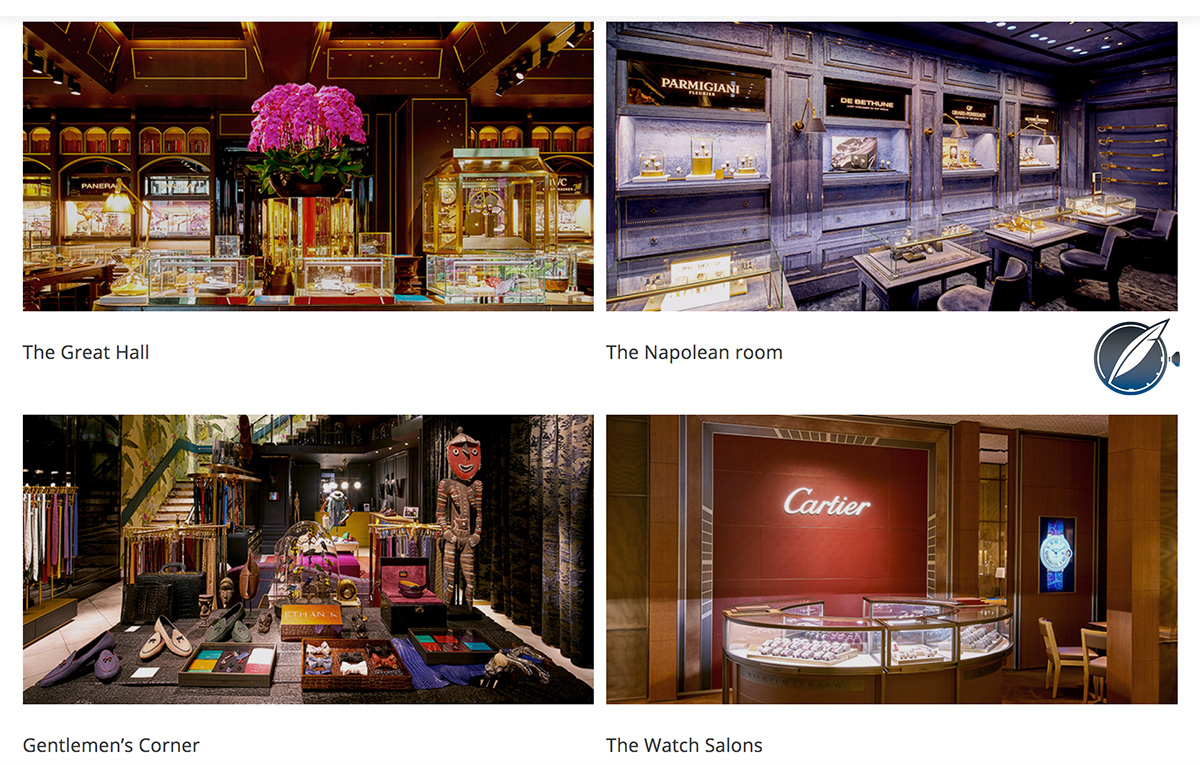
Malmaison by The Hour Glass offers an immersive luxury experience
My prediction is that brick-and mortar retailers will transform into three main categories:
- The luxuriously well-appointed boutique with well-educated staff offering an exceptional retail experience. Malmaison by The Hour Glass is an example of this.
- Retailers owning/managing monobrand boutiques, which become mainly a place to try on watches in a setting and environment controlled by the brand.
- Low-margin retailers offering a place to try on watches by many brands, but carrying little stock as the orders and delivery are managed by the brands. These will also handle after-sales services paid using a rate set by the brands.
On the internet retailing side, experience has shown that size is everything and the first big multi-brand platform to get things right is likely to clean up. If Richemont can make LVMH an offer it can’t refuse regarding taking a stake in the YOOX Net-A-Porter platform that could well be game over, especially if it is open to the smaller independents as well. YNAP could easily become the Amazon/eBay of horology.
Swatch Group, which has generally been a decade behind the curve with everything digital or web-related might well try to develop its own platform out of pride, but would be much better joining a platform that worked and already had large market share.
Naturally, something will happen and all of my predictions will be completely wrong.
But one more important factor has to occur for the watch industry to set itself up for a healthy future in the digital age: stop the over production. You can either sell exclusive low-volume luxury with high margins or high-volume mass market products at low margins. The present crisis is largely caused by brands trying to have it both ways because that’s what worked in the pre-digital age. That’s over (unless your name is Rolex).
What do you think will happen in the watch retailing future, and, more importantly, what would you like to see? Please leave your thoughts in the comments below.
You may also enjoy Navigating The Grey Market: A Retail Expert Explains The Whys And Wherefores.

